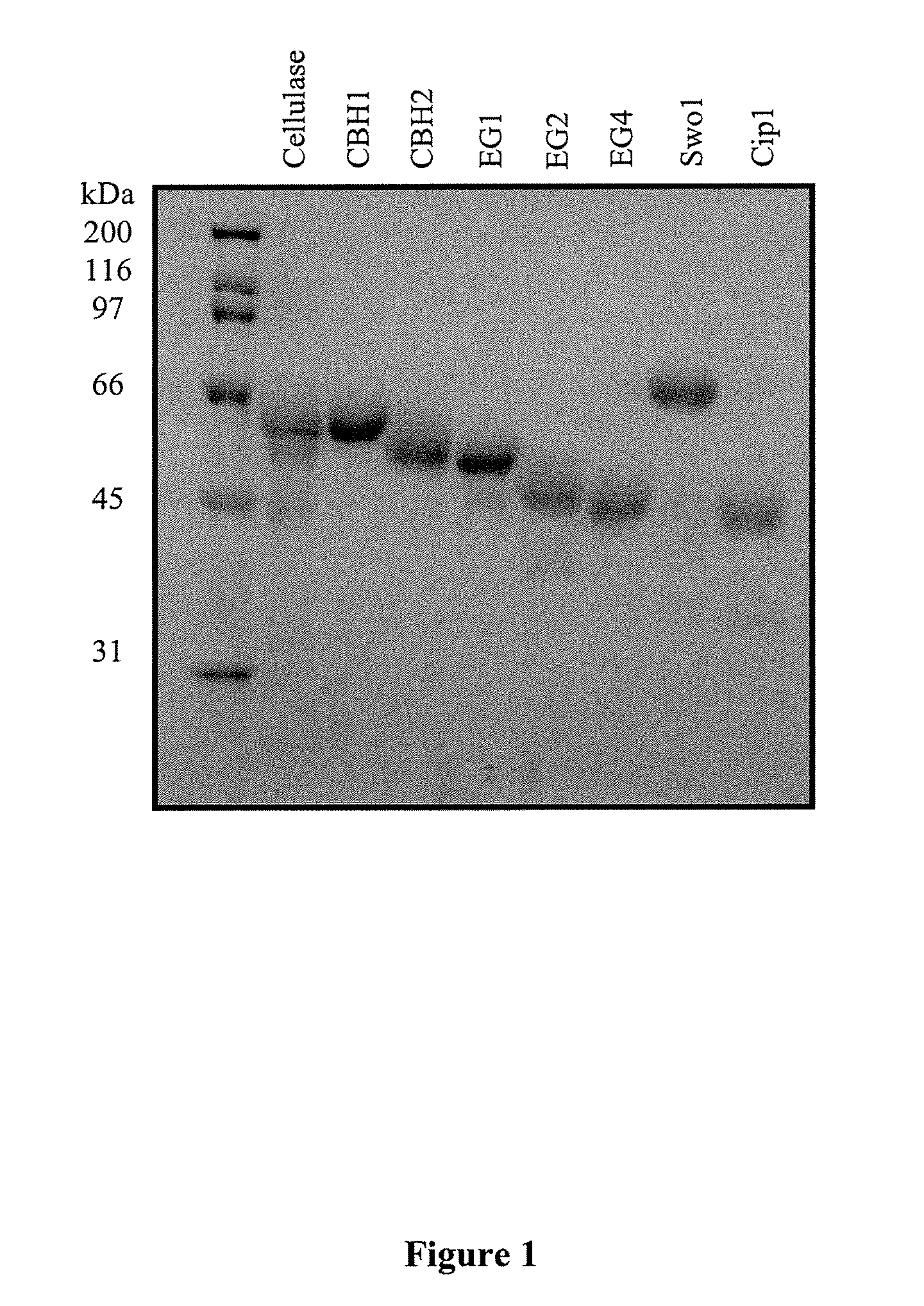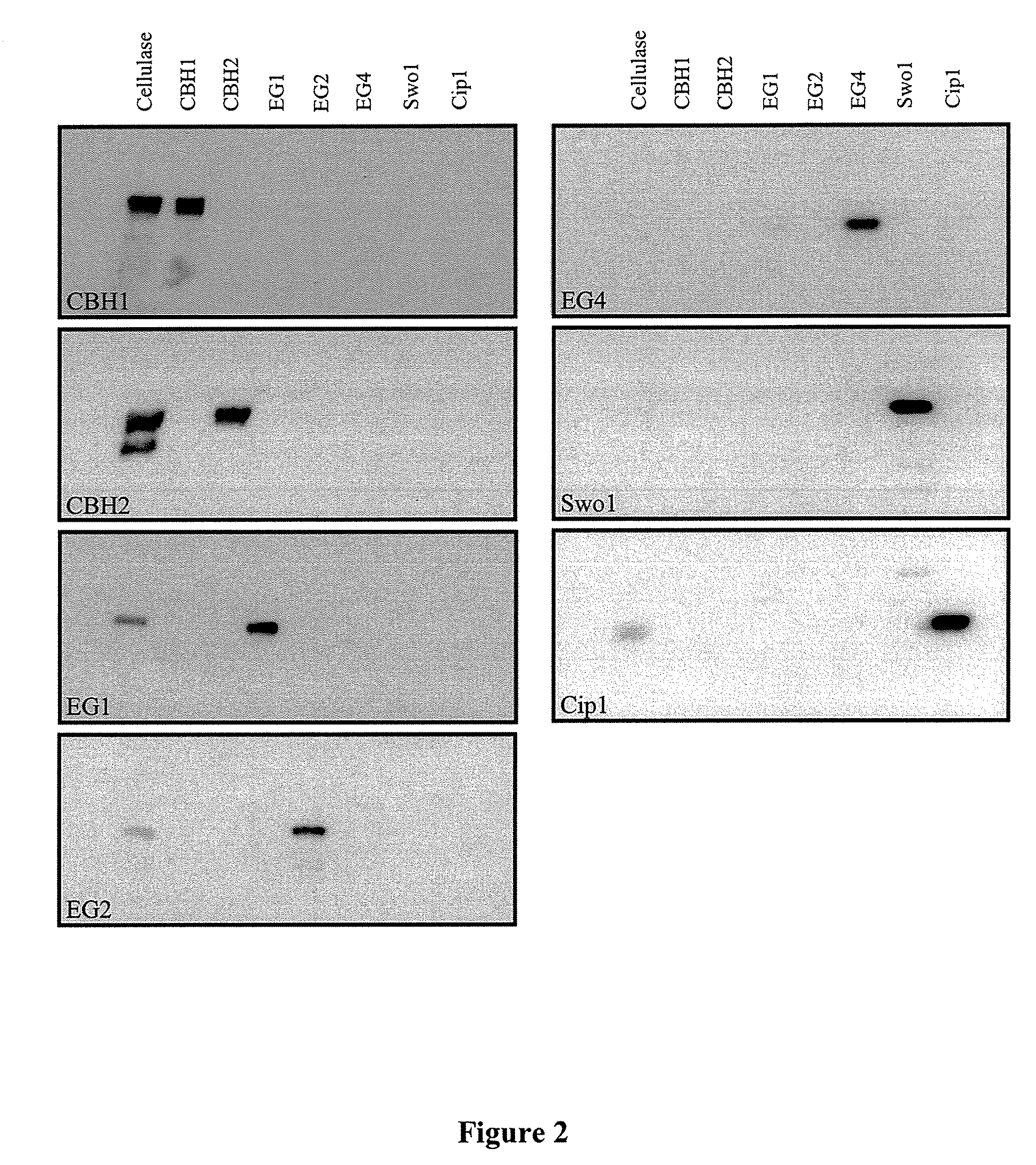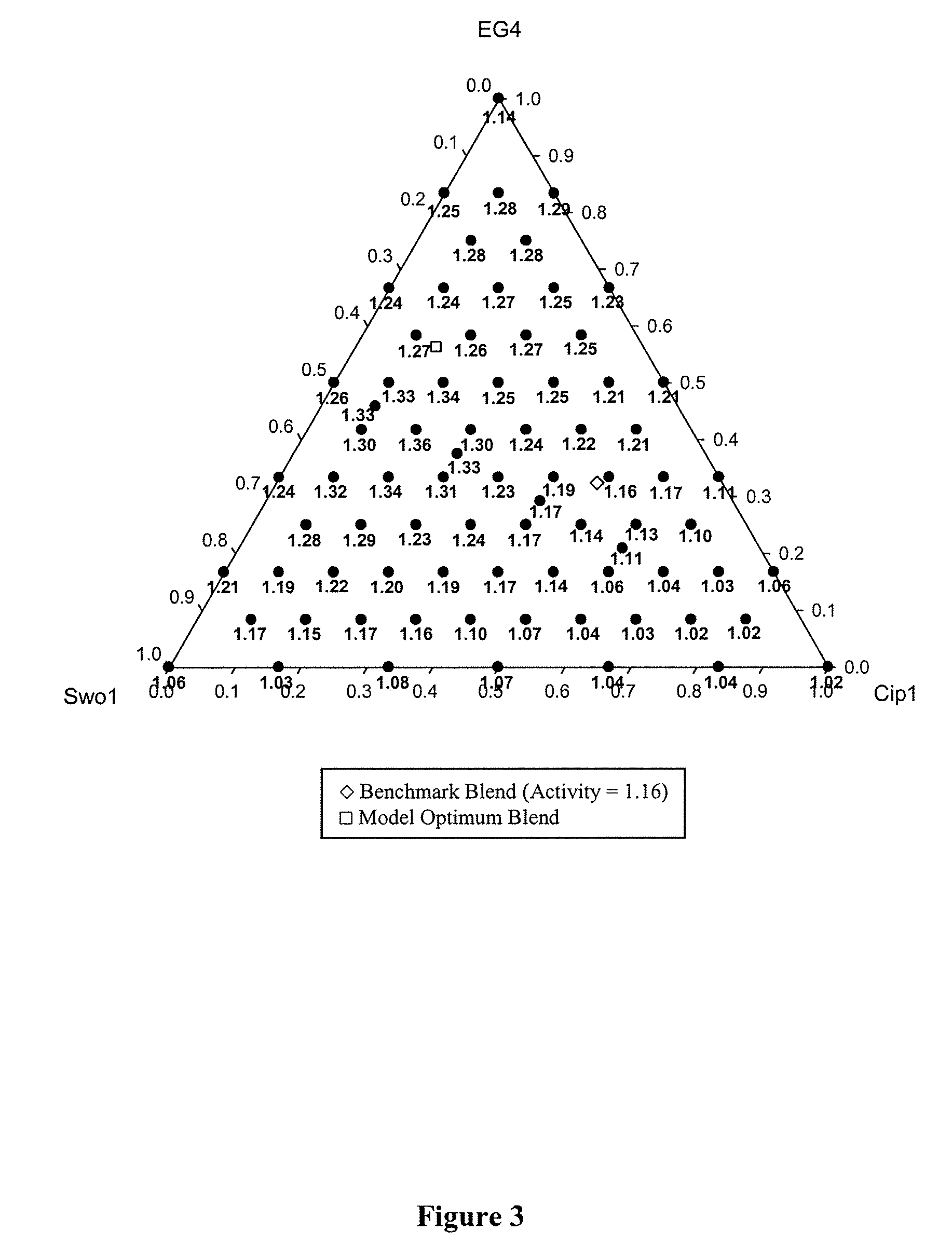Enzymatic hydrolysis of lignocellulosic feedstocks using accessory enzymes
a technology of accessory enzymes and lignocellulosic feedstocks, which is applied in the direction of enzymes, sugar derivatives, biochemistry apparatus and processes, etc., can solve the problems of inefficient step, cost, and inability to easily break down lignocellulosic feedstocks into composite sugar molecules, and achieve the effect of improving enzyme activity and improving the hydrolysis of pretreated lignocellulosic feedstocks
- Summary
- Abstract
- Description
- Claims
- Application Information
AI Technical Summary
Benefits of technology
Problems solved by technology
Method used
Image
Examples
example 1
Purification of the Primary Cellulases, CBH1, CBH2, EG1 and EG2, and Accessory Components, EG4, Swo1 and Cip1, from Trichoderma reesei Cellulase
[0092]A strain of Trichoderma reesei was grown in submerged liquid fermentation under conditions that induce cellulase production as known to those skilled in the art. (See, for example, White et al. U.S. Pat. No. 6,015,703). The crude mixture of Trichoderma proteins was secreted by the cells into the fermentation broth. The fungal cells were removed from the fermentation broth by filtration across a glass microfiber filter containing a Harborlite filter bed. The primary cellulases (CBH1, CBH2, EG1, EG2) were separated from the crude filtrate by ion exchange chromatography as described by Bhikhabhai et al. (1984). This step isolates EG1 and EG2. CBH1 and CBH2 were then further purified by p-aminophenyl-1-thio-β-D-cellobioside affinity chromatography as reported by Piyachomkwan et al. (1997, 1998). In order to purify the accessory components,...
example 2
Measuring the Concentration and Purity of the Primary Cellulases and Accessory Components
[0093]Protein concentrations were determined chemically using the method of Bradford et al. (Analytical Biochemistry, 72:248-254, (1976)). Samples of each purified protein (6 μg) were separated by SDS-PAGE and visualized post-electrophoretically by Coomassie Blue stain. The staining intensity of each band was quantified by scanning densitometry using a Chemigenius2 (Syngene) imaging system. A sample of a Trichoderma cellulase (12 μg total protein) was included for reference. Relative purity of the primary and accessory components was calculated by dividing the band intensity for each component by the total staining intensity measured for all bands in the same lane on the gel. EG2 lacking a carbohydrate-binding module was present in small quantities but was not considered a contaminant in this preparation. The relative purity of CBH1 and CBH2 were >95% while that for EG1, EG2, EG4, Swo1 and Cip1 ...
example 3
Determining the Concentrations of Primary Cellulases and Accessory Enzymes in a Commercial Trichoderma reesei Cellulase
[0096]The relative concentrations of primary and accessory components in a commercial Trichoderma reesei cellulase were determined by ELISA.
[0097]Cellulase and purified component standards were diluted 1-100 μg / mL in phosphate-buffered saline, pH 7.2 (PBS) and incubated overnight at 4° C. in microtitre plates (Costar EIA—high binding). These plates were washed with PBS containing 0.1% Tween 20 (PBS / Tween) and then incubated in PBS containing 1% bovine serum albumin (PBS / BSA) for 1 hr at room temperature. Blocked microtitre wells were washed with PBS / Tween. Rabbit polyclonal antisera specific for CBH1, CBH2, EG1, EG2, EG4, Swo1 and Cip1 were diluted in PBS / BSA, added to separate microtitre plates and incubated for 2 hr at room temperature. Plates were washed and incubated with a goat anti-rabbit antibody coupled to horseradish peroxidase for 1 hr at room temperature....
PUM
| Property | Measurement | Unit |
|---|---|---|
| wt % | aaaaa | aaaaa |
| wt % | aaaaa | aaaaa |
| wt % | aaaaa | aaaaa |
Abstract
Description
Claims
Application Information
 Login to View More
Login to View More - R&D
- Intellectual Property
- Life Sciences
- Materials
- Tech Scout
- Unparalleled Data Quality
- Higher Quality Content
- 60% Fewer Hallucinations
Browse by: Latest US Patents, China's latest patents, Technical Efficacy Thesaurus, Application Domain, Technology Topic, Popular Technical Reports.
© 2025 PatSnap. All rights reserved.Legal|Privacy policy|Modern Slavery Act Transparency Statement|Sitemap|About US| Contact US: help@patsnap.com



